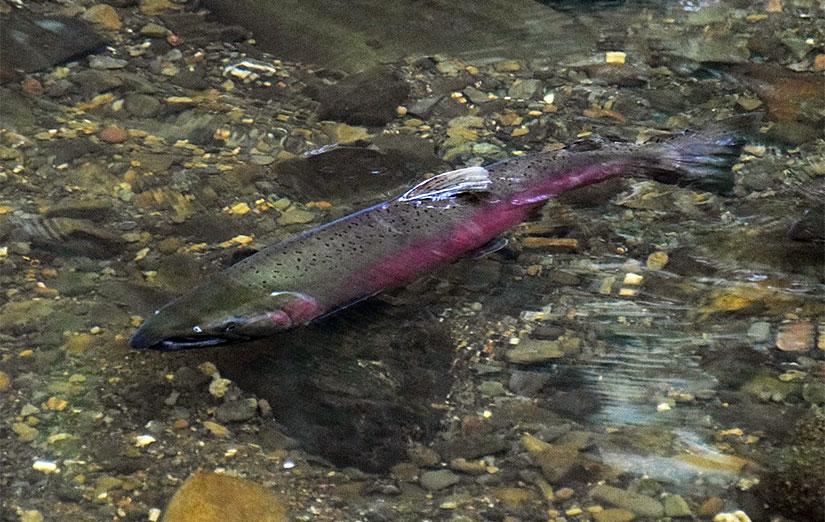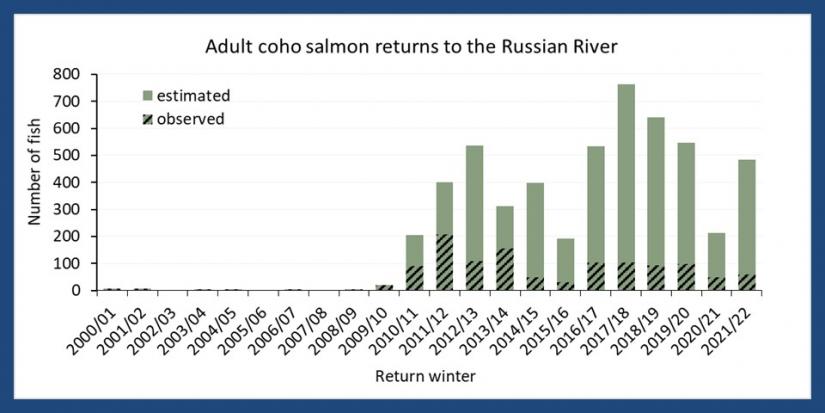Breadcrumb
Adult Returns

The number of returning adults is an important metric in coho salmon recovery, as these fish are the basis of future wild coho populations. NOAA Fisheries has established a recovery target of 10,100 adult coho salmon returning each winter to the Russian River basin.
2021/22 adult return update
We used PIT-tag data to estimate that 484 hatchery coho salmon adults returned to the Russian River watershed over the winter of 2021/22. This number is slightly above the previous 10-year average of 454.
The 2021/22 spawner season started with incredibly wet conditions in October, which persisted through the end of December but were followed by extremely dry conditions from January through April. This unusual precipitation pattern impacted returning salmon and steelhead in strikingly different ways. Even the smallest streams were accessible during the December-through-January peak of the coho run. Coho were documented in 19 of 31 coho salmon streams surveyed (61%)--more than the 49% average observed over the previous six years. The low winter flows that occurred during most of the January through April steelhead migration window, however, limited fish access to upper stream reaches and smaller tributaries. The number of steelhead redds observed was less than half of the lowest estimate from the past seven years. Despite this, steelhead were seen in 61% of streams surveyed--close to the previous five-year average (63%).

See our Winter Monitoring Reports for more information on adult sampling methods and outcomes.
Check out these videos of salmon spawning in our local streams: